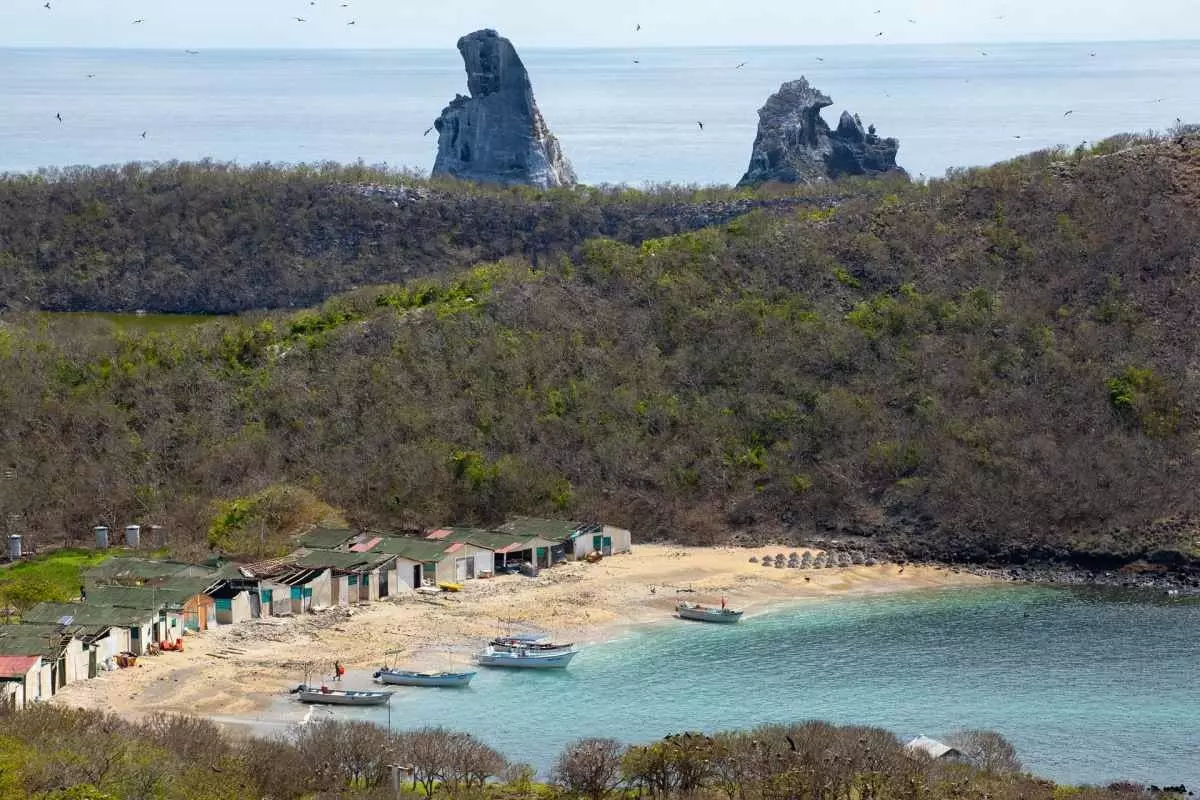
The French filmmaker Jacques-Yves Cousteau baptized Isabel Island as "the little Mexican Galapagos".
Elizabeth Island. So soon and without more references, it doesn't sound like much to us. In fact, there are many Mexicans, even those who live in the state of Nayarit, who have never been to Isabel Island. And the matter has an explanation. Well several: Isabel Island is isolated in the Pacific Ocean, about three hours by boat from the coast from San Blas, the nearest port.
Yet another stumbling block: it is a National Park and Biosphere Reserve with a high degree of protection —the birds that inhabit it are very vulnerable to disturbance factors— and therefore only 60 people can access a day. Its price? Charter a boat for six with an ecotourism company that has the permits to Access to the island costs approximately €600.
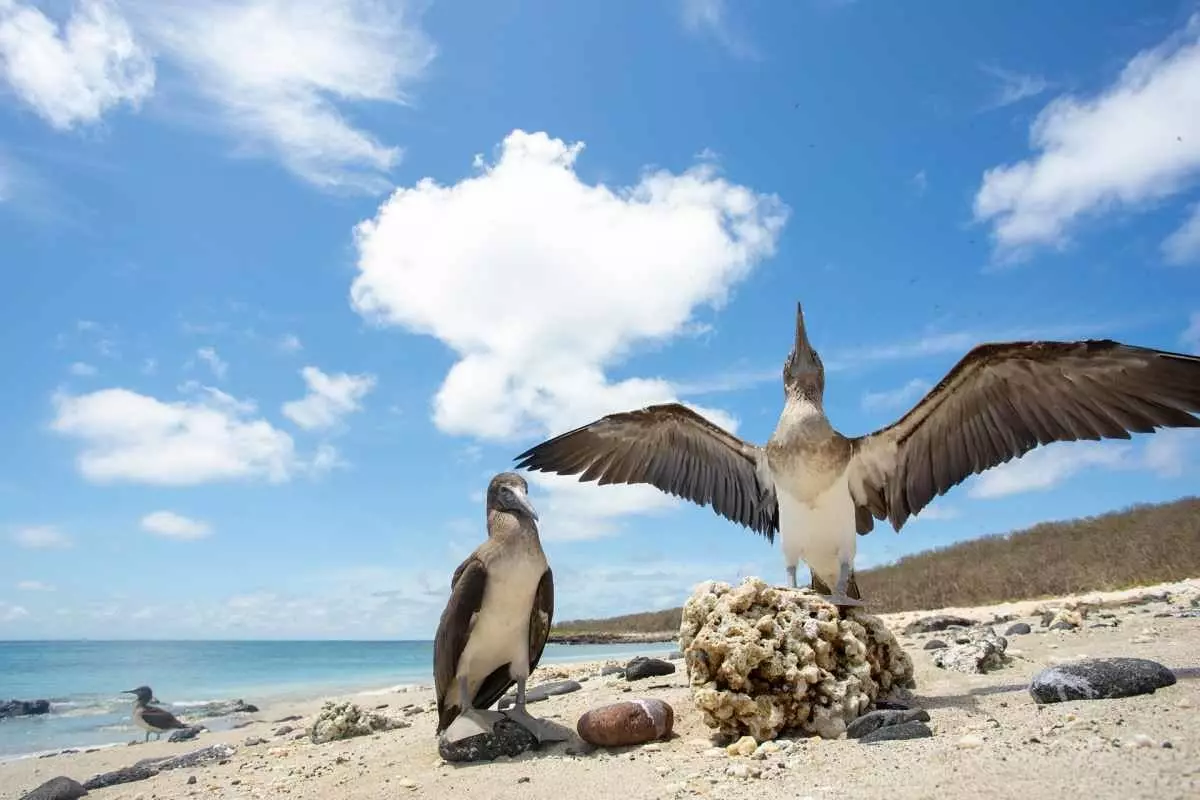
Blue-footed Boobies are some of the most numerous seabirds on Isabel Island.
already on the boat, The trip, although long, has plenty of attractions so that it does not become tiresome. To begin with, there are the dolphins that inhabit these waters and that usually come out to say hello when one least expects it.
Between November and May, in addition, The whale shark frequents the area, which can reach 16 meters and that it is considered the largest fish in the world. So, if luck is on our side, to the already extraordinary experience of getting to know Isla Isabel, we can add the bonus of swimming with these marine leviathans.
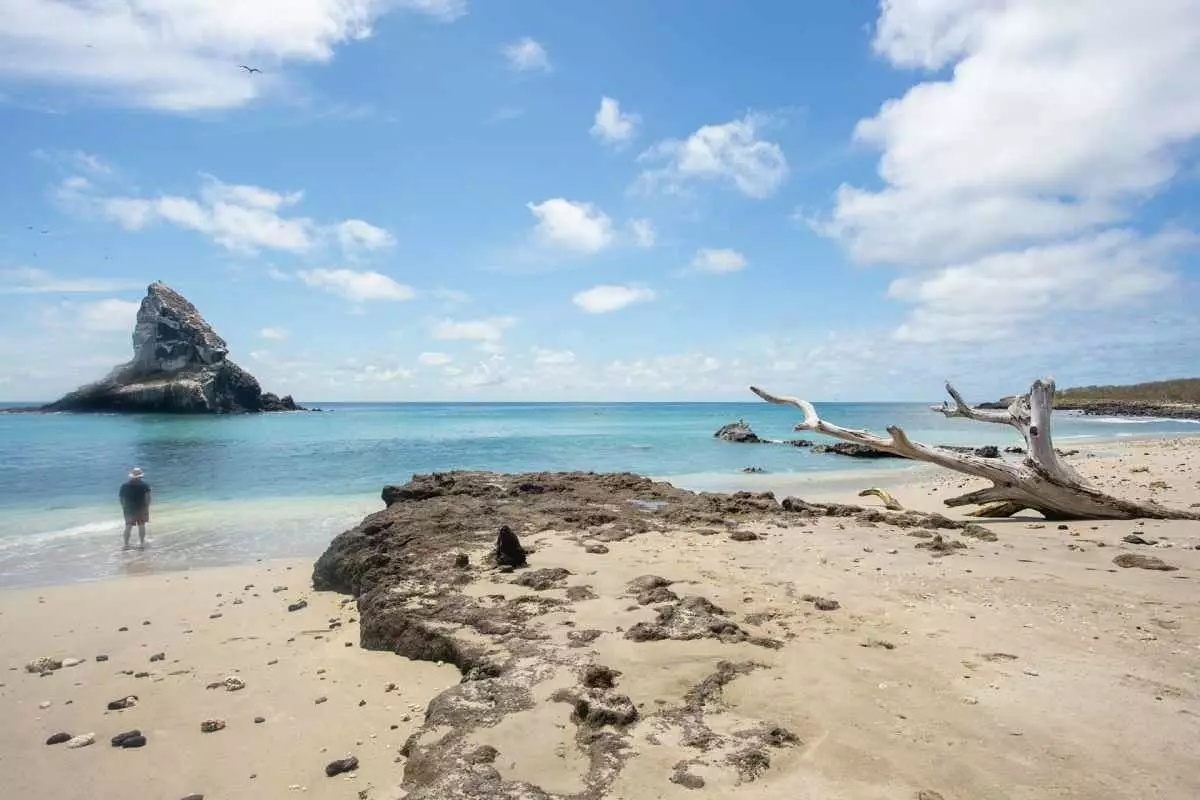
Las Monas beach is part of a unique ecosystem: lagoons, mangroves, sandy beaches, slopes and coastline.
Arriving on the island, one understands why the French oceanographer and filmmaker Jacques-Yves Cousteau baptized it as "the little Mexican Galapagos". Except for the simple fishermen's houses that line the beach –sailors are the only ones who stay a few days in the area– the rest of the island is practically virgin.
Without running water, without electricity and what is better: hardly any human beings. And it is that this is the undisputed kingdom of thousands and thousands of seabirds that nest in trees, beaches, cliffs and rock islets. The truth is animals do not flinch in the presence of humans: At every step you have to be careful not to step on the iguanas, because they are neither in a hurry nor willing to move away. Missing more! They are in their house!
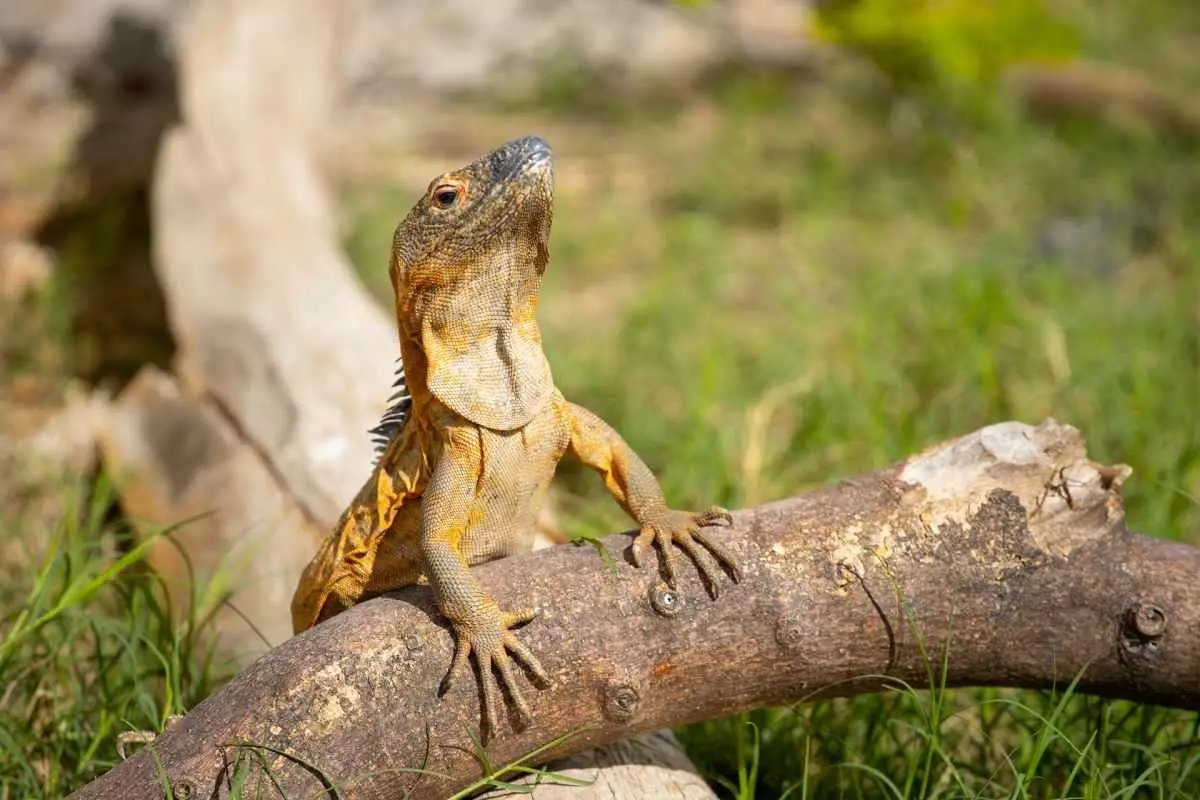
The iguanas of Isla Isabel are not afraid of human beings and roam freely.
On Isabel Island they breed nine species of large seabirds and among them are the emblematic frigatebirds (Fregata magnificens) that are very recognizable during the mating season because the males inflate their spectacular gular pouch of an intense red colour. In this sanctuary you can also see numerous pelicans (Pelecanus occidentalis), brown boobies (Sula leucogaster) and the colorful blue-footed boobies (Sula nebouxii) that curiously can also be found in the original Galapagos.
MARIETAS ISLANDS, ANOTHER PARADISE... ACCESSIBLE
But Isabel Island National Park It is not the only one in this corner of the Mexican coast that boasts of being on the list of the UNESCO Biosphere Reserve. Islas Marietas National Park —made up of Isla Larga and Isla Redonda — is also a temple of birds and underwater fauna that delights scientists. But its great accessibility –it only takes 20 minutes by boat– and the immense beauty of the place naturally attract many visitors, which has generated many problems of tourist overexploitation that we are trying to combat.
And although the Marietas also have capacity restrictions, the reality is that during on weekends the area surrounding the islands is filled to the brim of boats, small boats and even boats with slides that come to bathe, practice diving, snorkeling or paddle surfing. And another reason for total success: **Playa Escondida has become the most desired setting for instagrammers eager to look great and add many likes. **
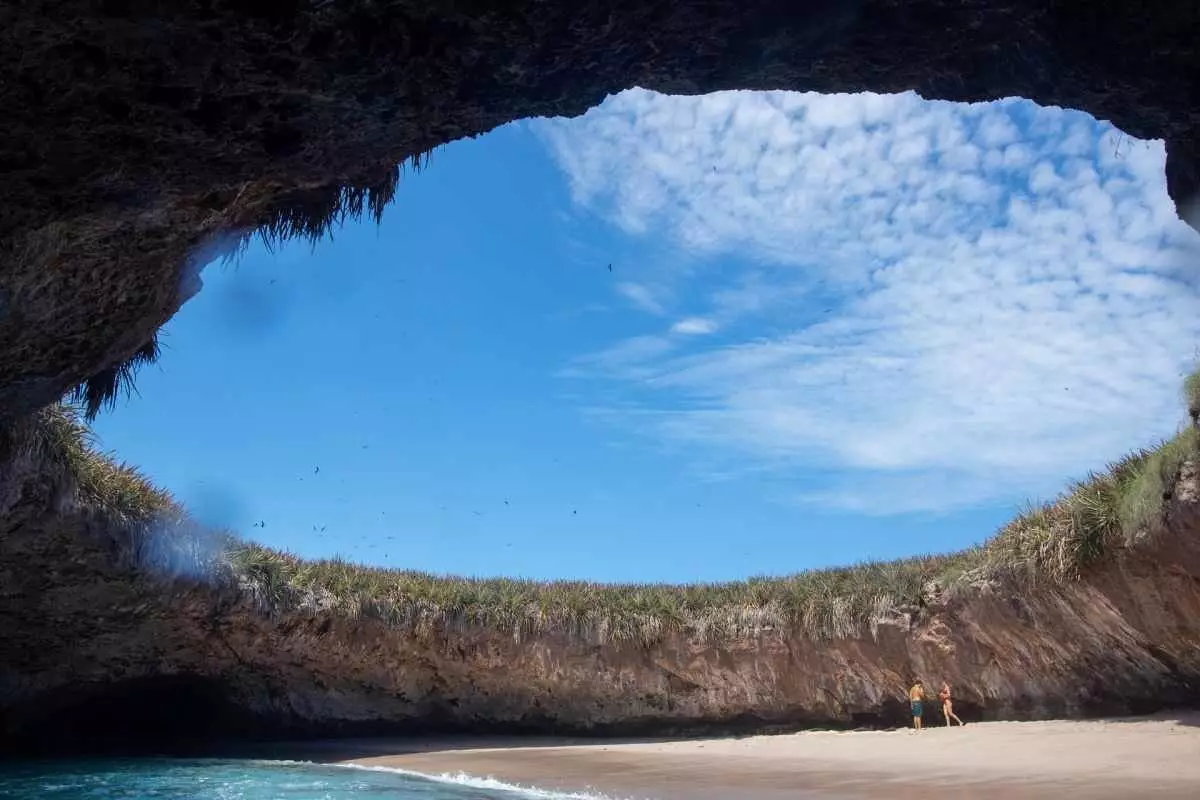
Playa Escondida or the object of desire of the instagramers who pass through the Marietas Islands.
According to popular belief, this curious beach enclosed in a kind of crater was formed after the practical bombings that were carried out here during the Second World War. But the truth is that **the immense circular hole of Playa Escondida is nothing more than a sinkhole, a natural geological phenomenon. **In simple words: it is the ceiling of a cave that collapsed. Her beauty is almost epic.
But access to it is not available to everyone. You have to jump into the sea from a boat, swim into a narrow underwater cave and hurry so you don't get caught in the waves. And this is only possible at low tide, if the wind is not blowing too much and when the sea conditions are favourable. Once the adventure is over, you finally arrive at Playa Escondida. That yes, for what we commented on the capacity control, you only have 30 minutes to visit the place – take selfies – and go swimming before the water rises too high.
**SUBSCRIBE HERE to our newsletter and receive all the news from Condé Nast Traveler #YoSoyTraveler **
